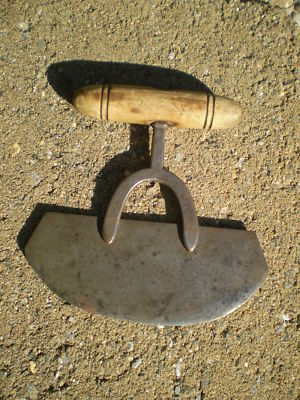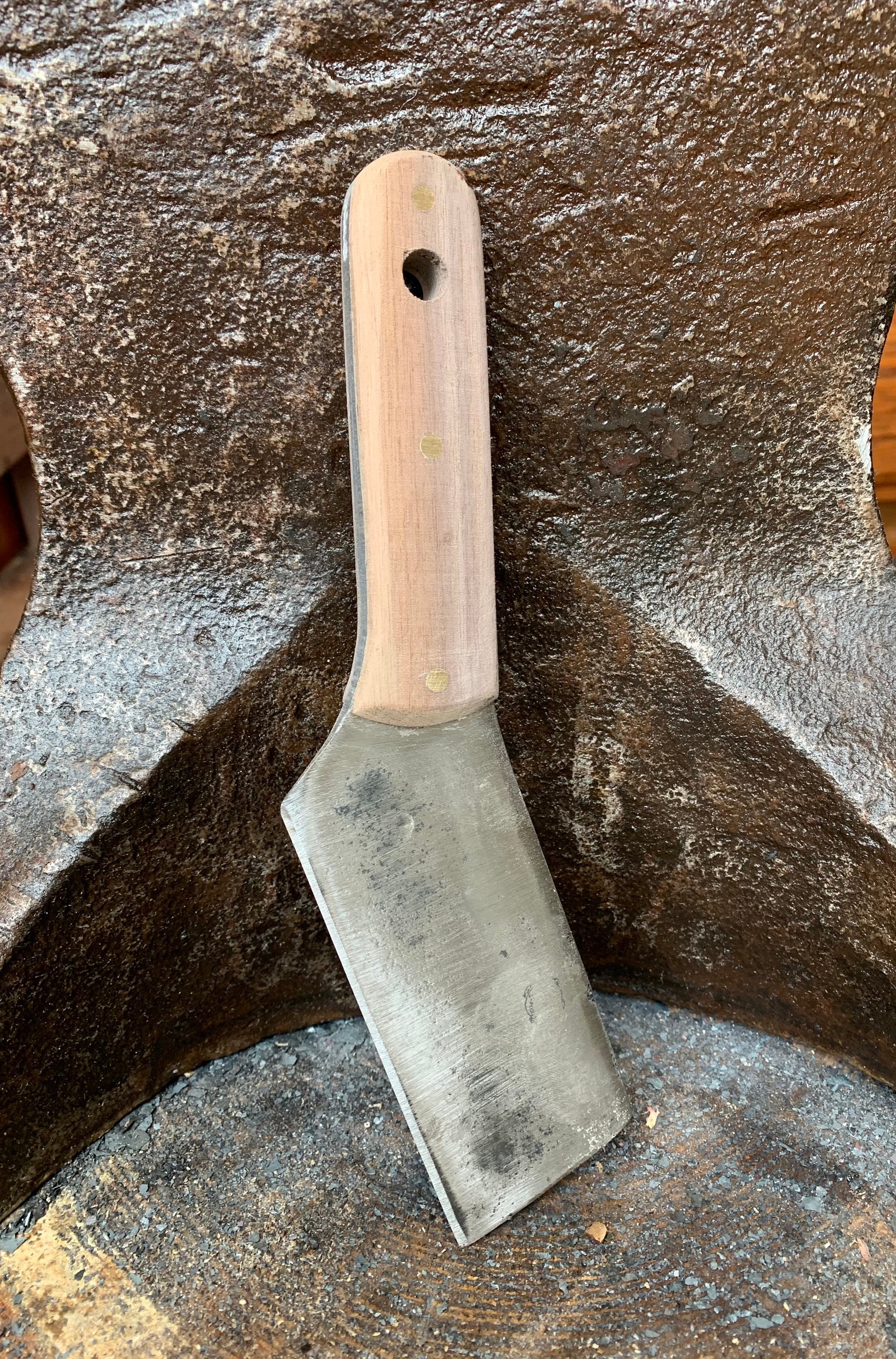
I came across a very informative chart that quantifies "sharpness" with actual measurements, and the minimum sharpness it takes to perform certain tests. However, this is actually pretty easy to do even with a fairly dull knife, whereas that same dull knife will glide across your fingernail. You’ve probably seen people testing out their knives by slicing paper. My dad uses his fingernails (like a boss), which was a little jarring to watch at first, but it actually is one of the most convenient and effective ways to test sharpness. How do you test the sharpness of your knife? When my dad used to work as a chef, he'd use the whetstone every two days, and he'd use his honing rod multiple times a day. How often do you need to sharpen a knife?Īt home, my dad sharpens his knives with a whetstone 3 to 4 times a year. Whatever angle you're going with, try to hold your knife at the same angle throughout the entire motion.
#Antique chopper knife how to#
To estimate this, Kenji López-Alt has a wonderful explanation of this in his video on how to sharpen a knife: My dad sharpens his knife based on intuition, but a great starting point is to go with a 15-20 angle.

How do you know what angle to sharpen your knife at? With a one-sided bevel, slices of meat or vegetable will naturally fall out of the way, which helps my dad be more efficient when cutting lots of stuff (he used to cut 40-50 pounds of meat every day). This is a lot more clear in the video, but if you're holding the knife, the "palm" side of the knife is sharpened flat, and the "fingernail" side of the knife is sharpened at a slant. This means that one side of the knife is sharpened at a 15-20 angle, and the other side is sharpened parallel to the stone. My dad prefers to sharpen his knife with a one-sided bevel. If your knife is dull, you always sharpen first, hone second. It does remove SOME material, but not nearly as much as running your knife against a whetstone. It's more of a polish that maintains sharpness.

There are three primary tools my dad uses to sharpen his knives at home and at the restaurant: Unfortunately, I wasn't able to find the exact brand and model online, but it's made of stainless steel. Read more about our cleaver restoration process.My dad's particular cleaver was made in Jiangmen / Kongmoon, a city in Guangdong Province which is famed for its high quality knives. But our makers search out these diamonds in the rough at old antique shows, flea markets or grandma’s garage, refurbishing the blades and handles to give them a new, improved life for the 21st Century. To make cleavers of this mass and quality of steel today would be prohibitively expensive to produce from scratch. Our refurbished cleavers come from an era where extraordinary steel was extremely cheap. Living Americana: Practical Artifacts from the Golden Age of SteelĪt New West KnifeWorks, we cherish the tradition of knife-making even as we forge new paths of innovation.

Prepare savory rump roasts at home, then chop them up right with this rump-stamped cleaver.

This particular piece shows simply the hindquarters. Many of WM Beatty's cleavers of this era portray a cow stamp on the blade. Beatty & Sons was o ne of America’s most prolific edge toolmakers, including broad axes used by shipwrights. Beatty & Sons of Chester, Pennsylvania, this tool is a pure piece of American history. W.M. Max Blade Height: 5.5" Antique Cow Stamp Distinction


 0 kommentar(er)
0 kommentar(er)
